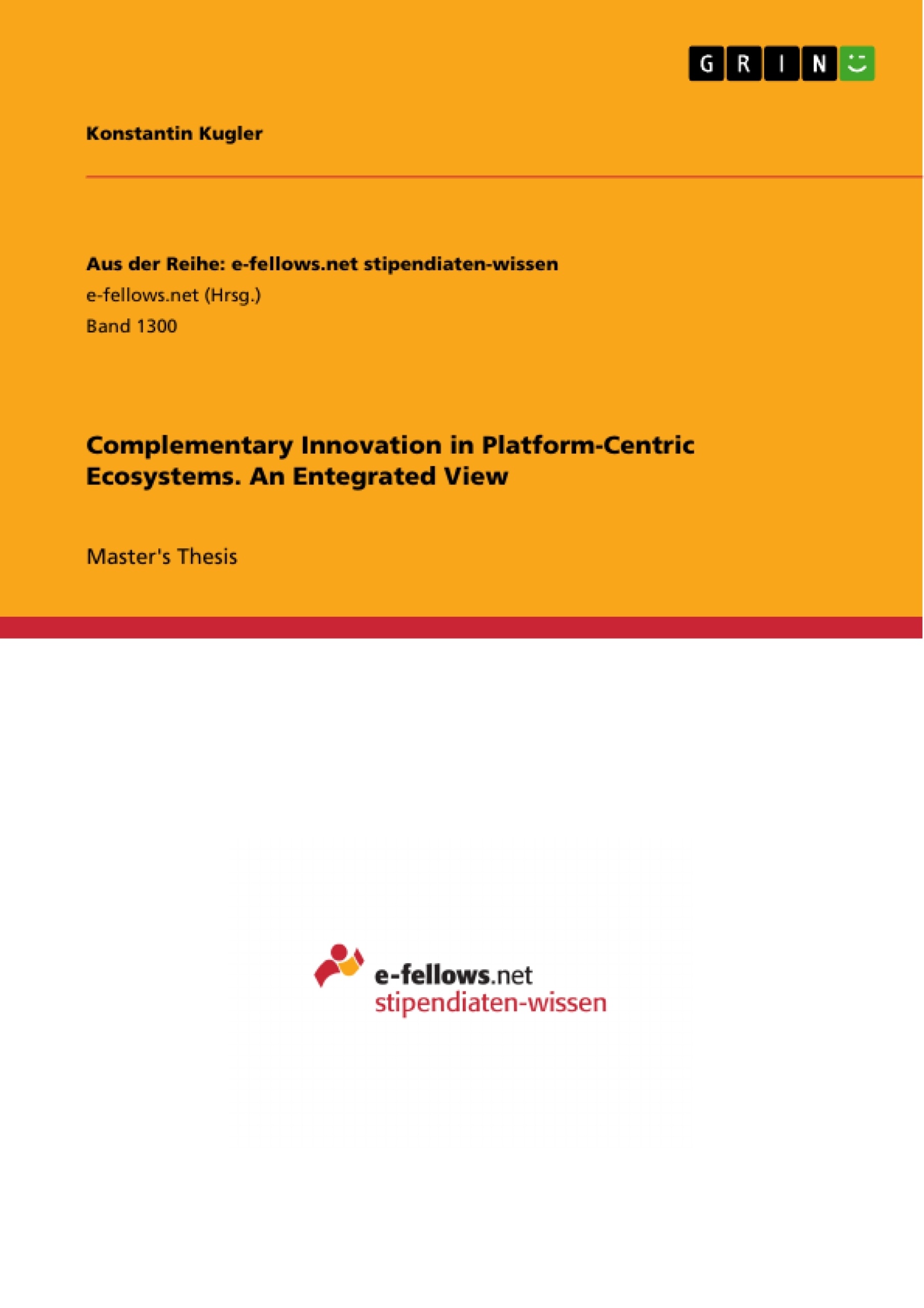Managers in strategy and organization for innovation are increasingly confronted with the challenge to compete on the basis of complex technology platforms. Prominent examples, such as Microsoft Windows (operating systems), Google (Internet search engines), Facebook (online social networks), Sony PlayStation (video game consoles), Visa (payment cards), Wal-Mart (retail), Tesla Motors (electric cars) or Life Technologies (genome sequencing), demonstrate that platforms are pervasive in many industries. In fact, platforms represent one of three configuration models through which firms innovate and generate value. Thus, platforms are both a mechanism for value creation through innovation and value capture through appropriation. Their economic importance is substantial: in terms of market value, 60 of the 100 largest companies worldwide earn more than half of their income in platform markets.
The emergence of platforms reflects the growing interdependency between products and services and the increasing dispersion of innovation activities among many different actors, especially in rapidly evolving high-tech industries. It has been widely acknowledged in management theory and practice that in order to successfully commercialize innovations and create value for end users, platforms have to be embedded in an interrelated array of organizations, including suppliers, complementors, customers, competitors and institutions. Thereby, platforms constitute the foundation upon which a vast and diverse web of firms, commonly defined as a ‘business ecosystem’, develop and provide complementary products and services.
While the question of how platform owners can stimulate R&D activities by complementors has been tackled in the academic literature and evolved to a promising research field, a coherent concept of the managerial levers is still missing. This motivates the following research question: “What firm-level and industry-level determinants of platform-centric ecosystems encourage or impede complementary innovation by third-party organizations?” Accordingly, the main objective of this thesis is to conceptualize an integrated view of the defining elements of platform ecosystems and their implications for the innovation orientation of complementors. In addition, this thesis aims to test and build on the proposed theoretical framework empirically by investigating the high-tech industry platform ecosystems of Amazon Web Services (AWS) and Advanced RISC Machines (ARM).
Inhaltsverzeichnis (Table of Contents)
- Introduction
- Research field and relevance
- Research question and approach
- Outline
- Theory
- Platform-centric ecosystems
- Product platforms
- Industry platforms
- Multi-sided platforms
- Complementary innovation
- Platform architecture
- Platform participants
- Platform dynamics
- Platform management
- Platform strategies
- Platform organization and governance
- Towards an integrated view: the determinants of platform-centric ecosystems and their implications for complementary innovation
- Platform strategy
- Degree of openness
- Market organization for complementors
- Platform organization
- Verticality
- Internal and interfirm organization
- Platform architecture
- Modularity
- Technical boundary resources
- Complementary asset position
- Appropriability regime
- Industry architecture
- Examining complementary innovation in platform-centric ecosystems: in-depth case study research on ARM and AWS
- Research methodology
- Research design
- Data collection and analysis
- ARM, the next Intel? How the 'fab-less' and 'chip-less' licensor of processor IP designs created a leading semiconductor platform ecosystem
- Company and platform ecosystem overview
- Platform strategy
- Platform organization
- Platform architecture
- Complementary asset position
- Appropriability regime
- Industry architecture
- AWS, beyond e-retailing: how the online bookstore Amazon built a leading platform and partner ecosystem for cloud computing services
- Company and platform ecosystem overview
- Platform strategy
- Platform organization
- Platform architecture
- Complementary asset position
- Appropriability regime
- Industry architecture
- Discussion
- Theoretical implications
- Managerial implications
Zielsetzung und Themenschwerpunkte (Objectives and Key Themes)
This Master's thesis explores the concept of complementary innovation within platform-centric ecosystems. The study aims to provide an integrated view of the determinants of these ecosystems and their influence on the development of complementary innovations.
- Platform-centric ecosystems and their characteristics
- The role of complementary innovation in platform ecosystems
- Determinants of platform-centric ecosystems
- Impact of platform strategy, organization, and architecture on complementary innovation
- Case studies of ARM and AWS to analyze real-world examples
Zusammenfassung der Kapitel (Chapter Summaries)
The thesis begins with an introduction outlining the research field, the research question, and the approach taken. Chapter 2 delves into the theoretical framework, examining platform-centric ecosystems, complementary innovation, and platform management. Chapter 3 builds on this foundation, proposing an integrated view of the determinants of platform-centric ecosystems and their implications for complementary innovation. This chapter examines factors such as platform strategy, organization, architecture, complementary asset position, appropriability regime, and industry architecture.
Chapter 4 presents two in-depth case studies: ARM and AWS. These case studies analyze the characteristics of their respective platform ecosystems and their implications for complementary innovation. Finally, the thesis concludes with a discussion of theoretical and managerial implications, summarizing the findings, addressing limitations, and outlining potential directions for future research.
Schlüsselwörter (Keywords)
The key focus of this thesis lies on the interplay between platform-centric ecosystems, complementary innovation, and the determinants that shape their dynamics. This includes concepts like platform strategy, platform organization, platform architecture, appropriability regime, and industry architecture. The research also leverages real-world examples like ARM and AWS to illustrate the practical application of these concepts.
- Citar trabajo
- Konstantin Kugler (Autor), 2015, Complementary Innovation in Platform-Centric Ecosystems. An Entegrated View, Múnich, GRIN Verlag, https://www.grin.com/document/300635



